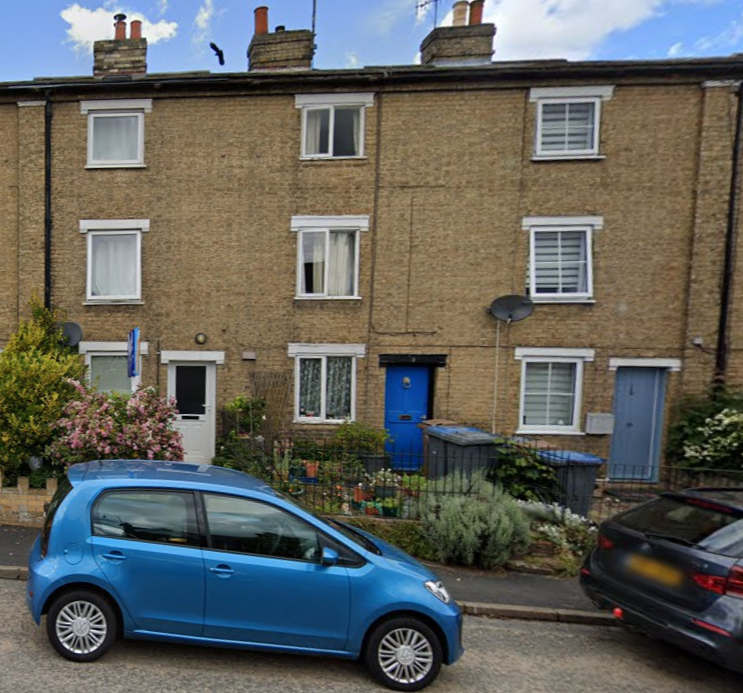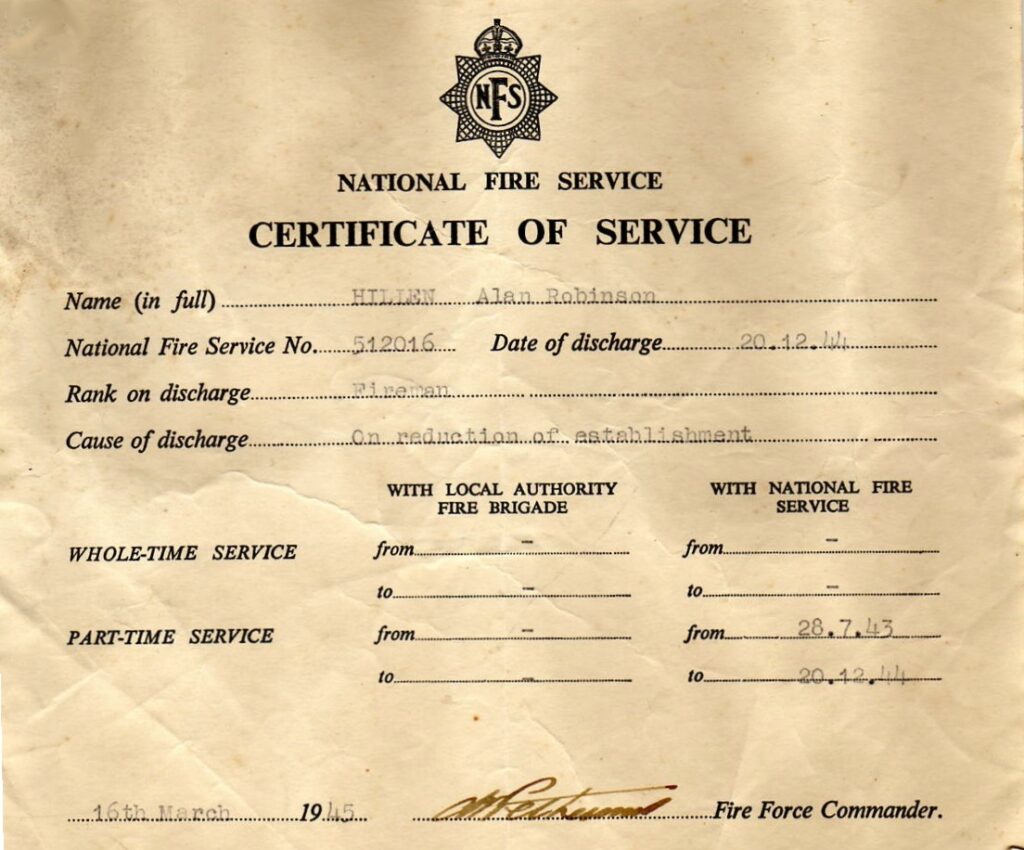
Alan Robinson Hillen (1893-1979)
Gramps looks a little fierce in this photograph, but appearances can be deceiving. He was a gentleman in every sense of the word.
Gramps was born in Windsor Place (a little mews halfway down Gloucester Place, marked in red on the old map below) the Mumbles, Swansea on March 29th 1893 (although he always celebrated his birthday on the 28th):
He was born at number 4, the blue house on the right. Genevieve visited the spot during her 2007 holiday in Swansea.
His mother was Lucy Hillen (nee Hodson).

His father, James Thomas Hillen, a professional photographer.

At the time of Gramps’s birth, his parents were living under an assumed name – Robinson – as his birth certificate shows.
James made the following childhood portrait photographs of Gramps as a child during the 1890s. The first one shows Gramps at the age of 2 (?) seated on the back of a Great Dane.

This next photograph was taken, I would guess, when Gramps was about five or six (1898/1899).

The dark section at the bottom contains valuable information, the name of the photographer (his father) and the address of his photographic studio. Prior to this we referred to Gramp’s father as James Hillen, but it turns out that he had a second name (note the initial ‘T’), Thomas. Also the address of his photographic studio, Melton Road, Woodbridge, is completely new information.

9 Prospect Place, Melton, Suffolk
And the house with the blue door (No. 9) is where the family was living (Mother-in-law, sister-in-law, husband and wife, plus four children. As you can see, these are not large houses. It must have been very cosy.
This next picture shows Gramps dressed up as Little Lord Fauntleroy, all lace and curls…

This one is a bit more serious, here he is 12 to 15 at a guess…and he clearly has a lot on his mind………

The First World War
At the outbreak of the First World War, Gramps and his two brothers, Stan and Reg, joined up. Gramps joined the Royal Signals, and his number was 62000. In the 1960s he committed his memories of that conflict to paper. These were first published on this site more than 20 years ago.
These memoirs, entitled ‘From Suvla to Malplaquet’ can be found here. They give details of Gramp’s experiences as a soldier in wartime, in Gallipoli, at the Somme and at Ypres.
This is Nanna and Gramp’s wedding certificate. They were both aged twenty at the time, not twenty one as stated on the certificate.

At the time, they were living at Brewer Street in Woolwich, now mainly incorporated into John Wilson Street. The Marriage Certificate is dated 16th October 1913, they were both aged 20 at the time, not 21 as stated on the document.
Nanna’s profession was listed as Draper’s Assistant. Here is a brief description of what that entailed:
In 1913 London, a draper’s assistant was a key employee in a drapery store, responsible for helping customers choose fabrics and textiles, cutting cloth to specific lengths, and managing transactions. They needed a deep knowledge of various materials and the latest trends in fashion and home decor. Their role also included maintaining the store’s presentation, managing custom orders, and upholding high standards of customer service in a formal retail environment. This position was considered respectable with potential for career advancement in the retail sector.
Gramp’s profession at that time was listed as Gold Blocker. Here is a brief description of what that entailed:
Goldblocking, also known as gold stamping or hot foil stamping, is a traditional craft where metallic foil is applied to surfaces like paper or leather using a heated die. This technique, often used in bookbinding, involves heating a metal die engraved with a design, pressing it onto a foil layer over the material, and then removing excess foil. The result is an elegant, metallic embellishment that enhances the appearance and value of books and other items. A skilled and meticulous process, goldblocking adds a touch of luxury and craftsmanship to various products. This skillful and meticulous craft , which often required significant experience to achieve precise and high-quality results, was particularly valued in the publishing industry for creating luxurious and attractive book covers and was also used for decorative purposes in various other fields.
Here we see Nanna and Gramps on a beach, possibly at Camber Sands, in East Sussex. Gramps enjoyed donning his swimming costume and going for a swim, well into his seventies.

Here is a larger family group, left to right, from back to front, Gramps, Nanna, Aunty Billie, Janet, Richard and Nigel. This photo was probably taken around 1960.

At a meeting of the committee of the Royal Humane Society at their office, 4, Trafalgar Square, on the 10th day of September 1929. Present Admiral Creswell in the chair.
It was resolved unanimously that the Honorary testimonial of this Society inscribed on parchment be hereby give to Alan Hillen for having on the 20th July 1929 gone to the rescue of two girls who were in imminent danger of drowning in the sea at Canvey Island and whose lives he gallantly saved.
This is the certificate:

Certificate of service for his WW2 fire service.

Here are some more pictures of Gramps and Nanna, starting with Gramps looking very chilled in a deckchair.

The photo of Nanna and Gramps below was probably taken in the back garden at his brother Stan’s house in Caterham in the late 1950’s or early 1960s.

Gramps and Nigel chilling out on the beach

Gramps often quoted his father’s advice ‘always make love to your wife’ (‘make love’ in the old sense of ‘demonstrating love’). He also knew how to translate words into actions, since he and Nanna were married for 66 years. The next photograph is of their Diamond Wedding (60 years) celebrations at the Bolney Stage, in Sussex, in 1973.

Here are the markers showing where Nanna and Gramps’s ashes were scattered, in Hastings.

